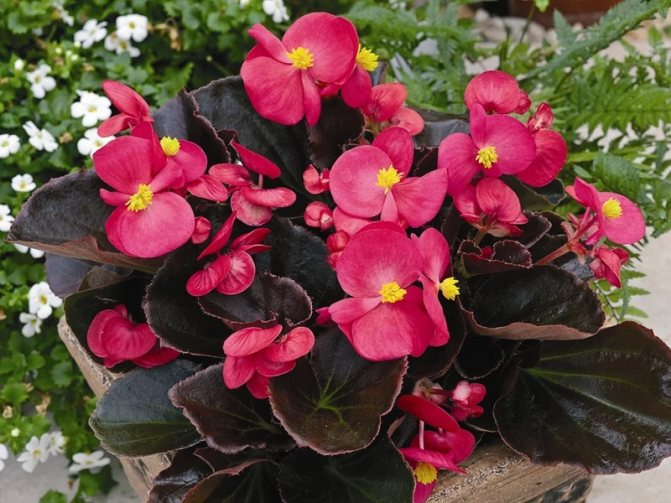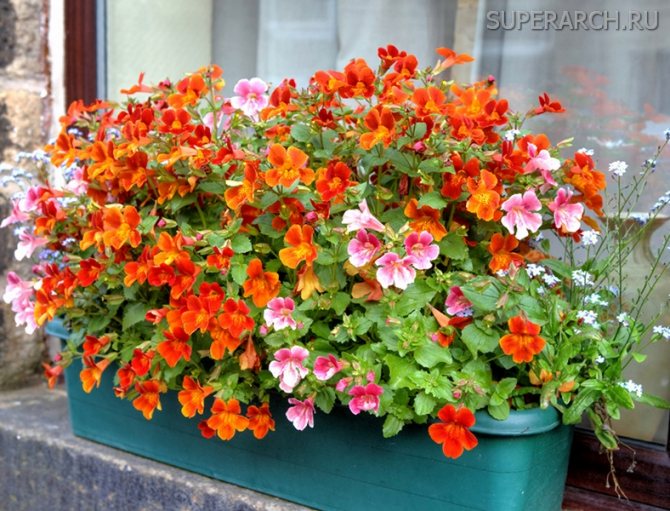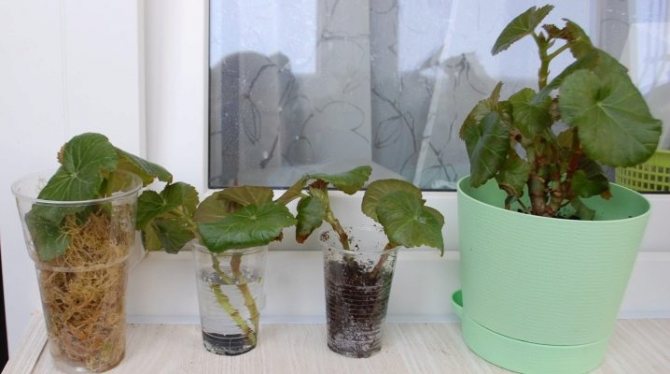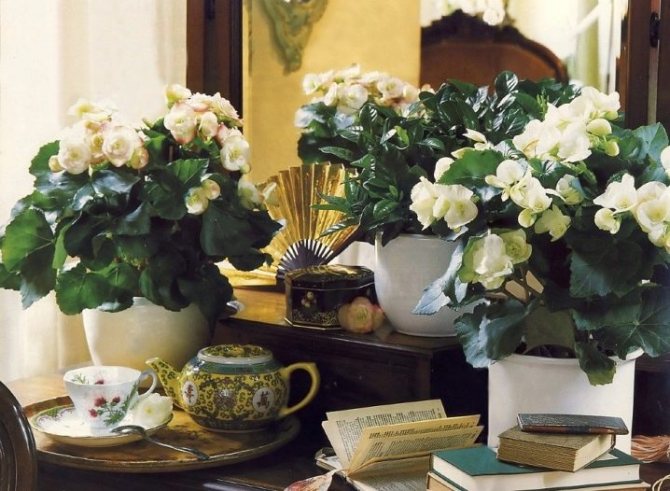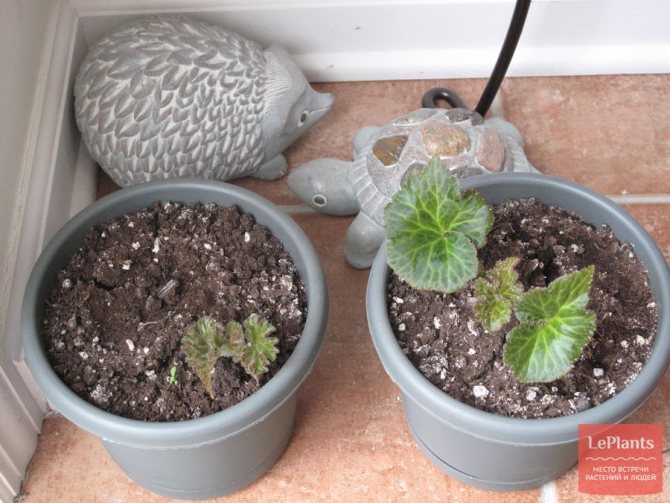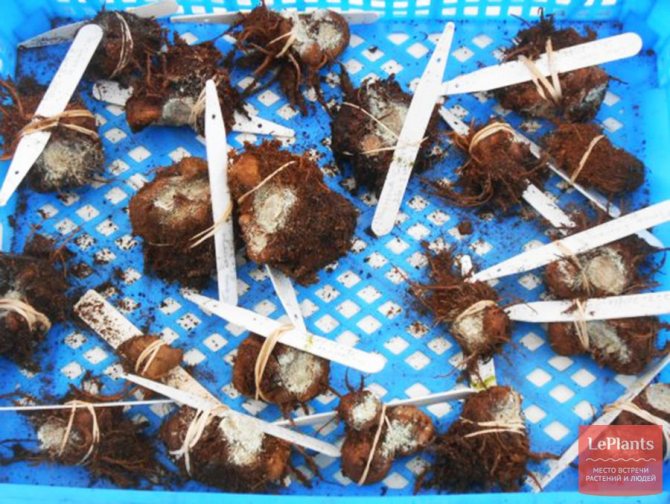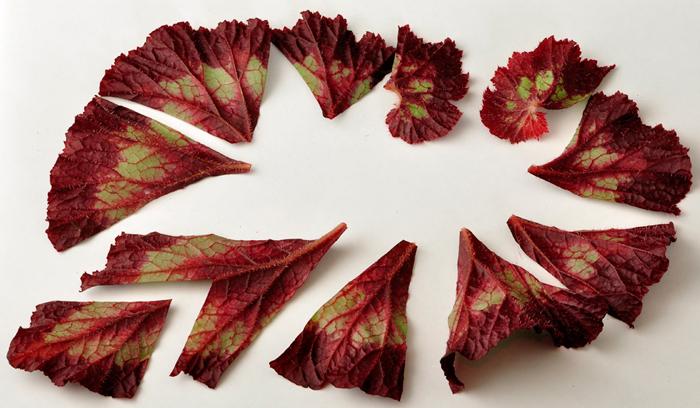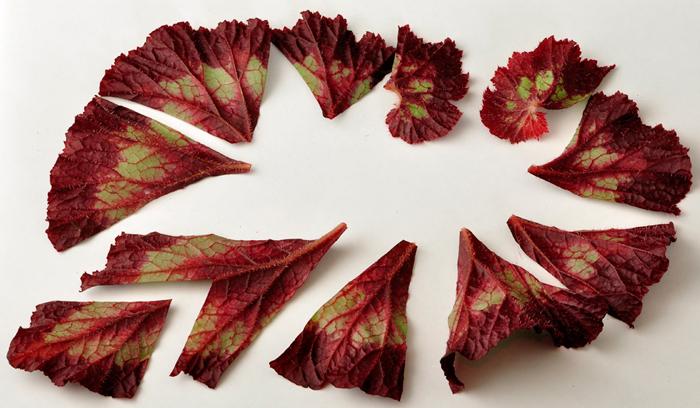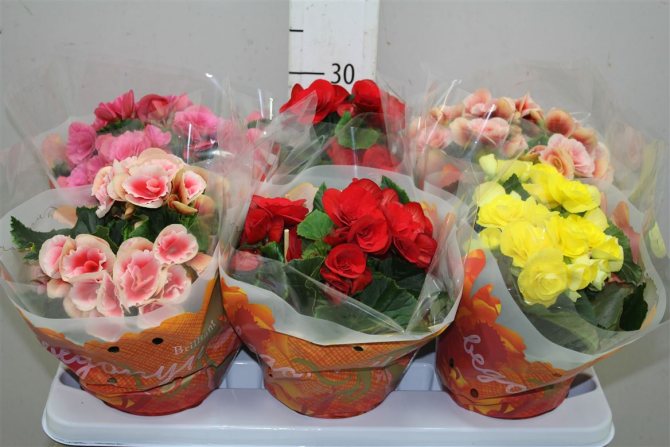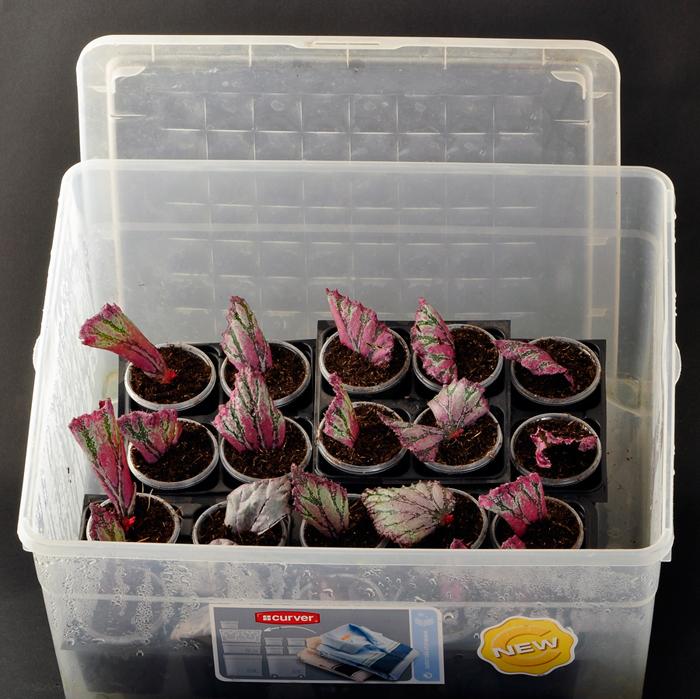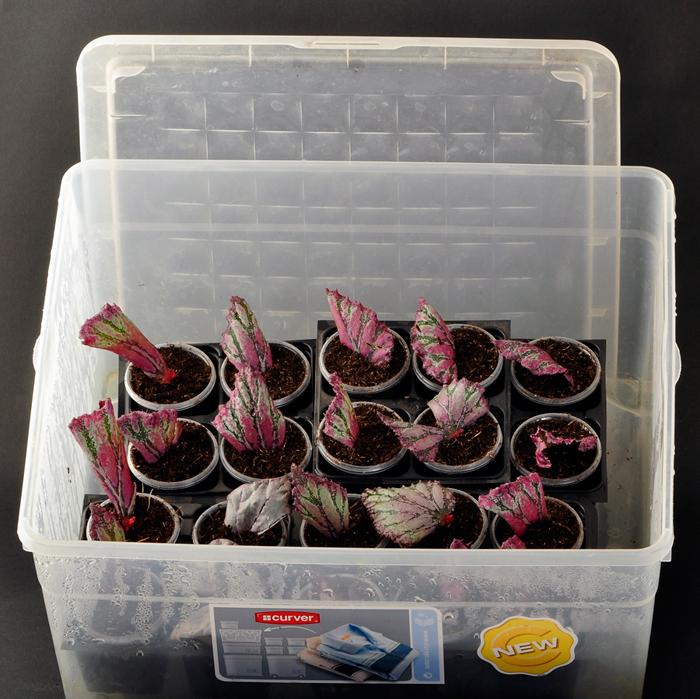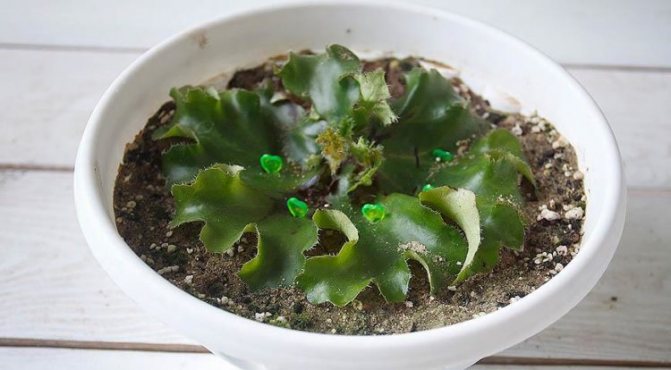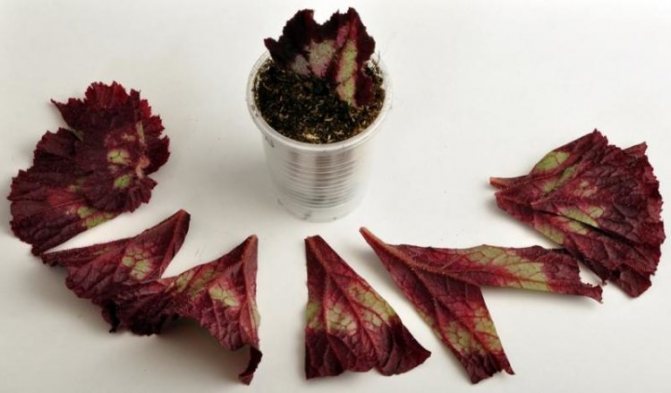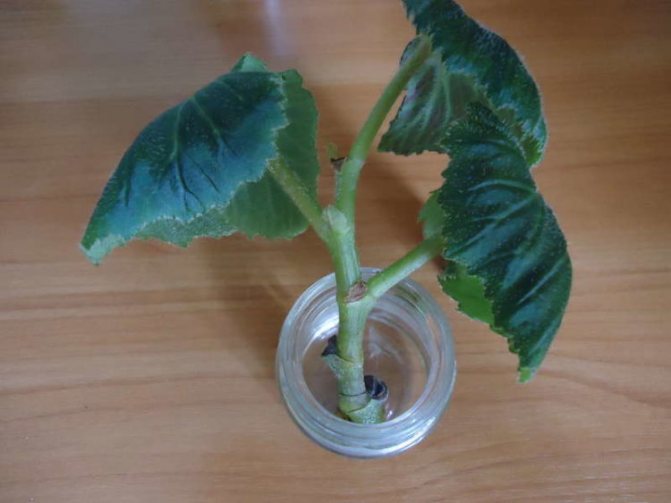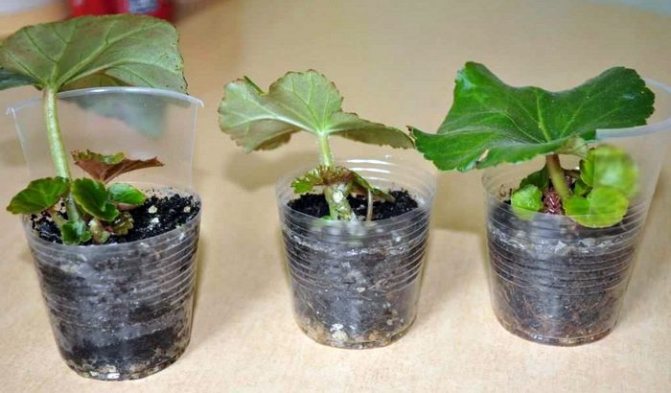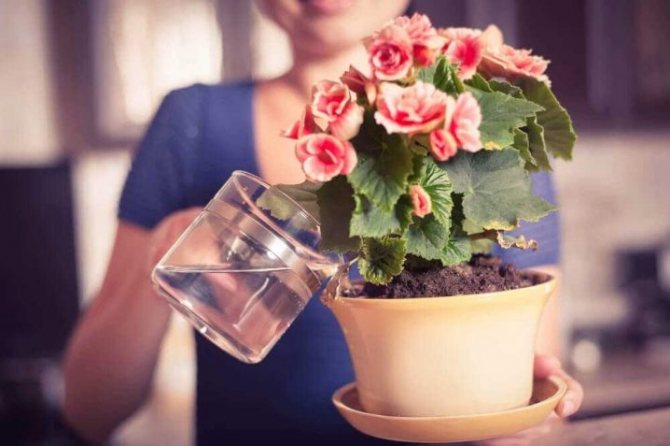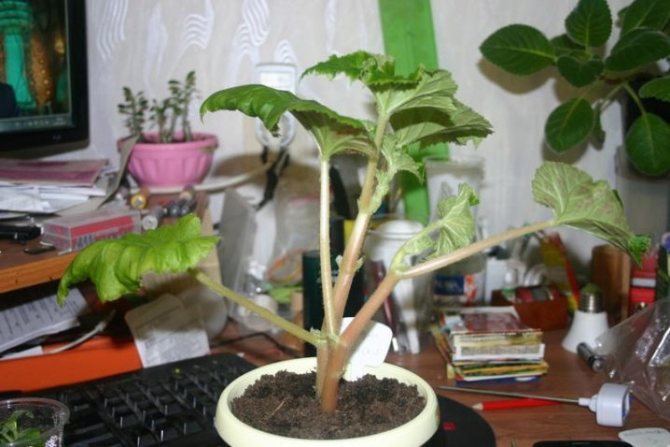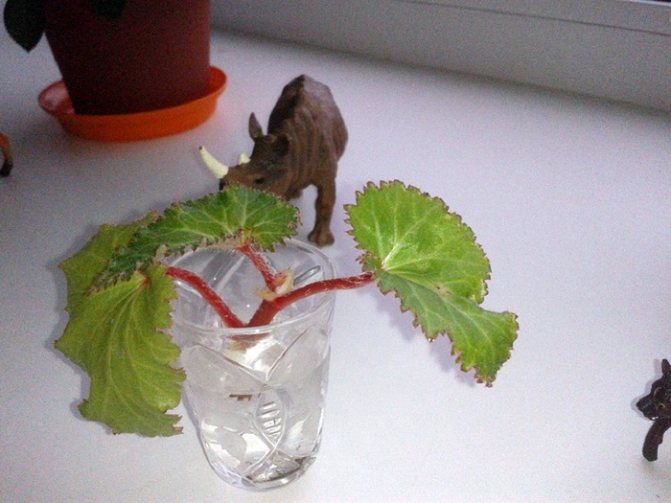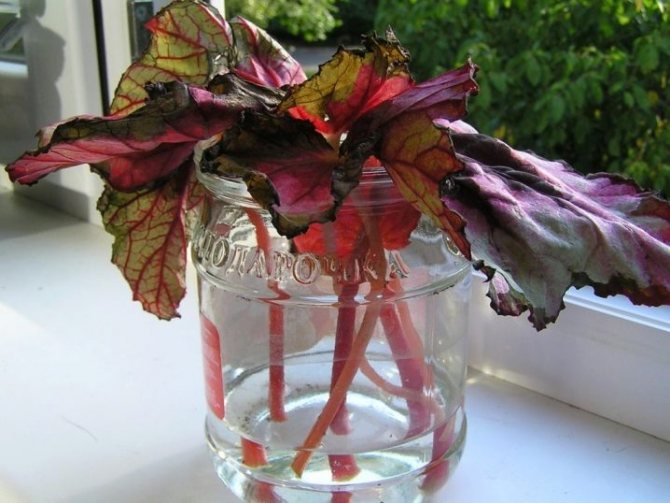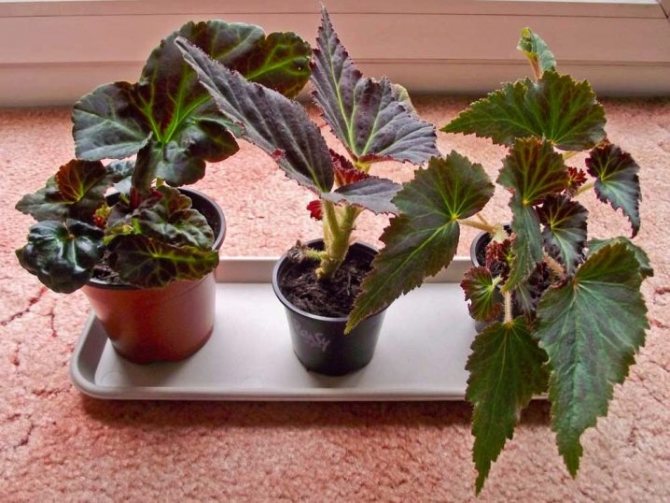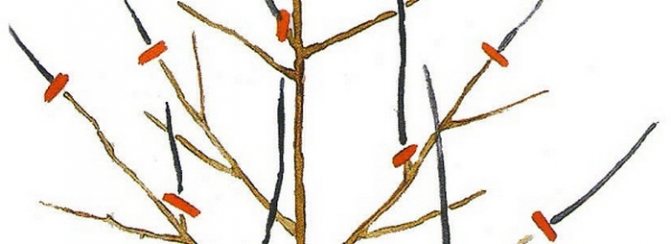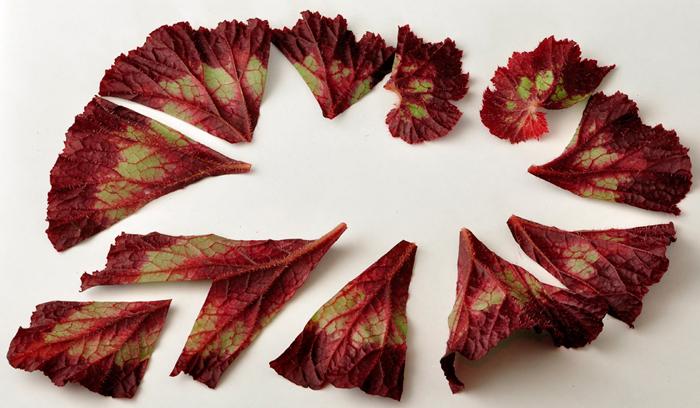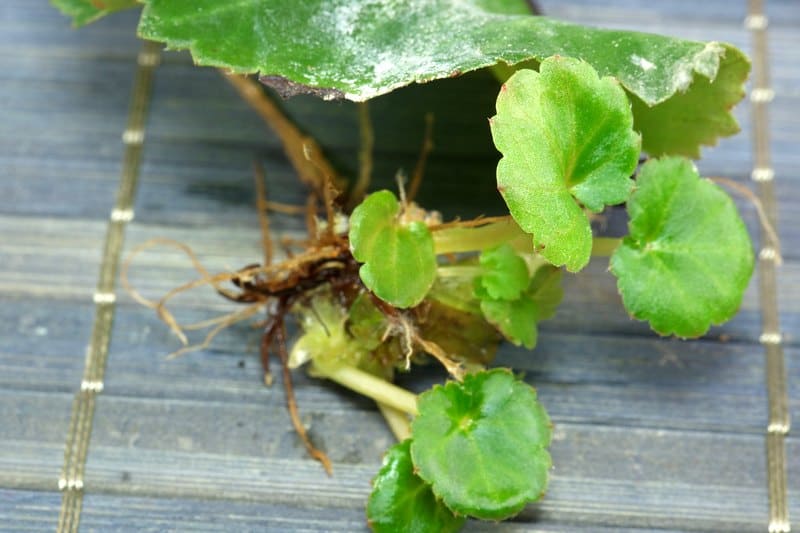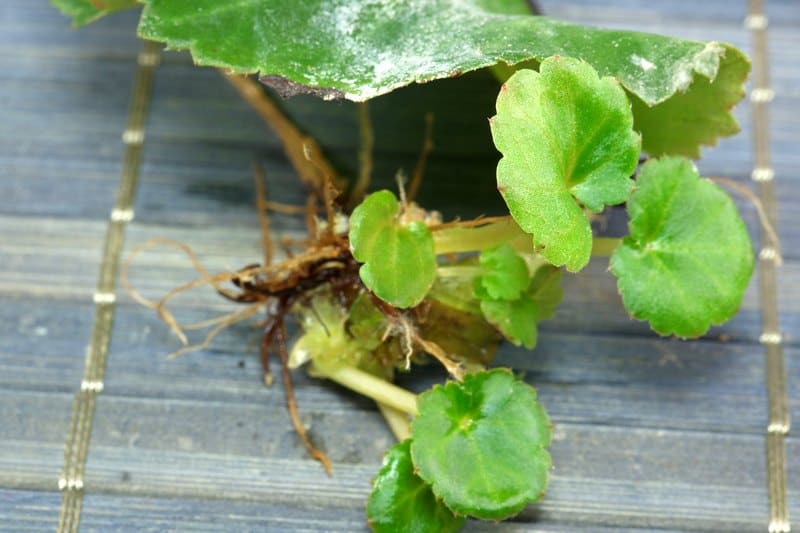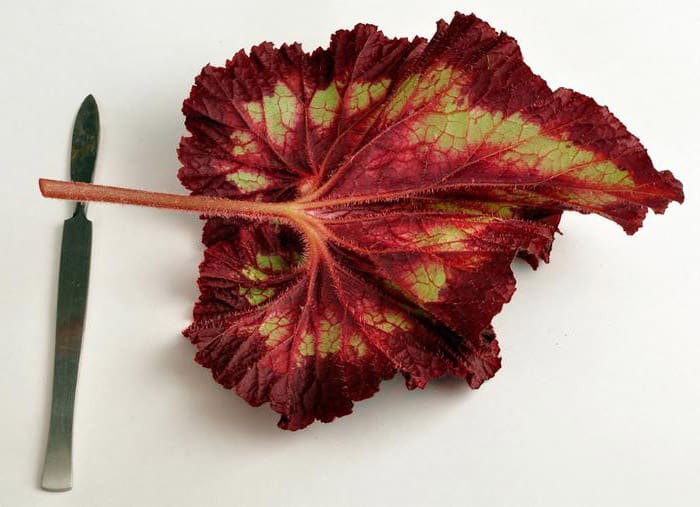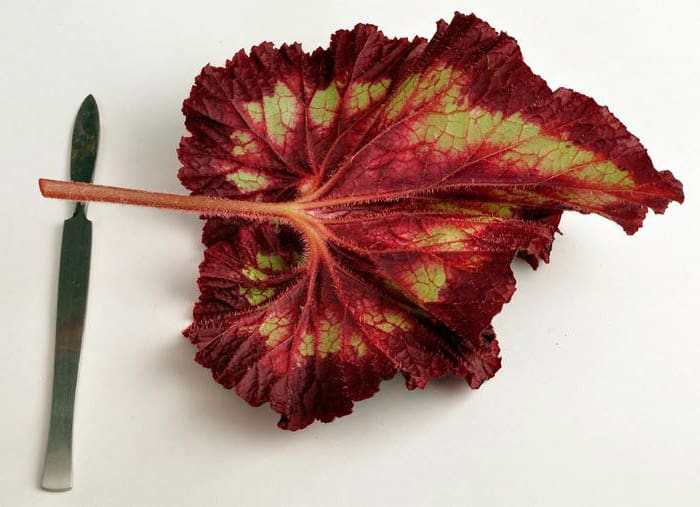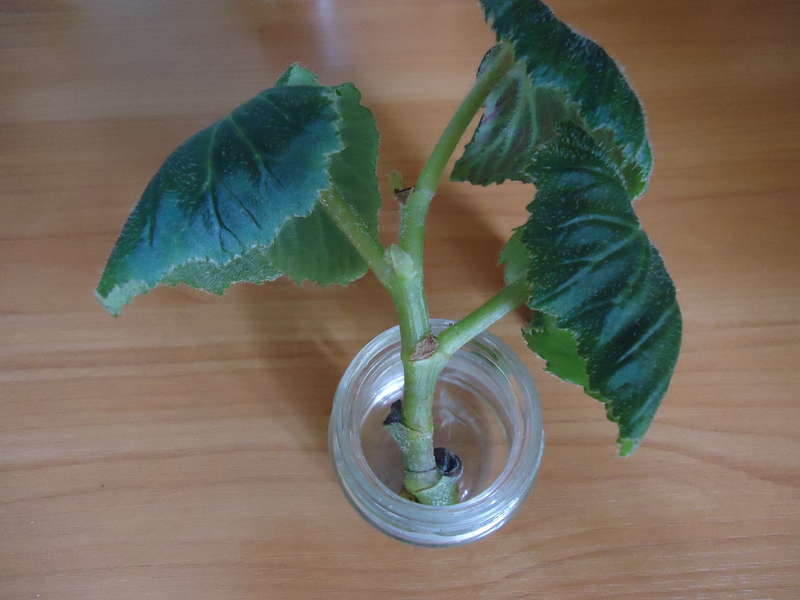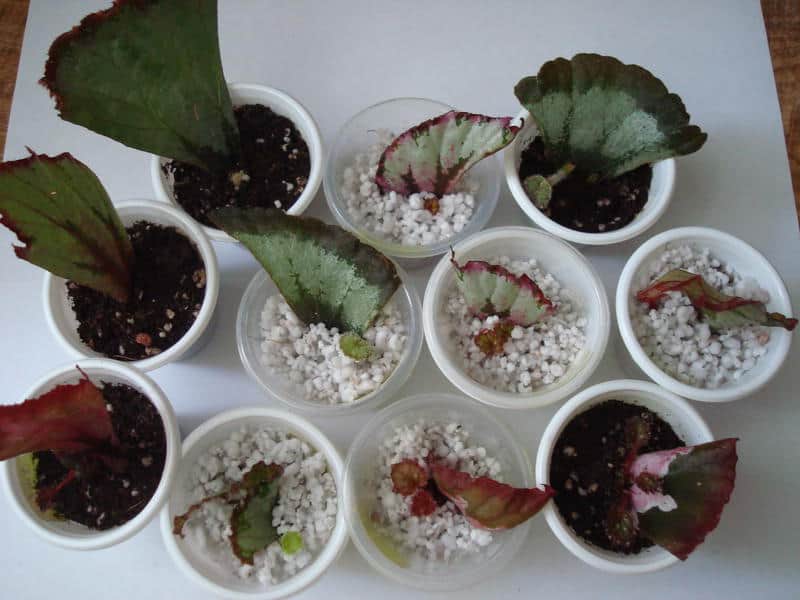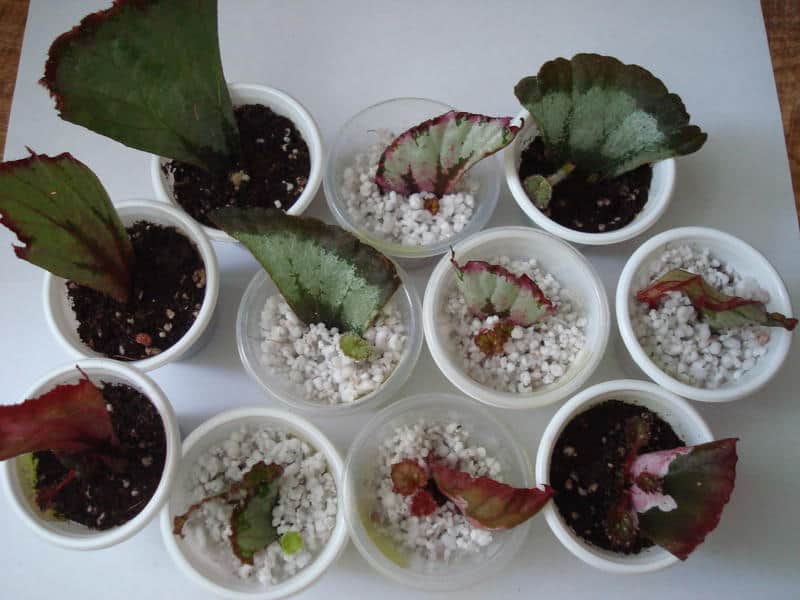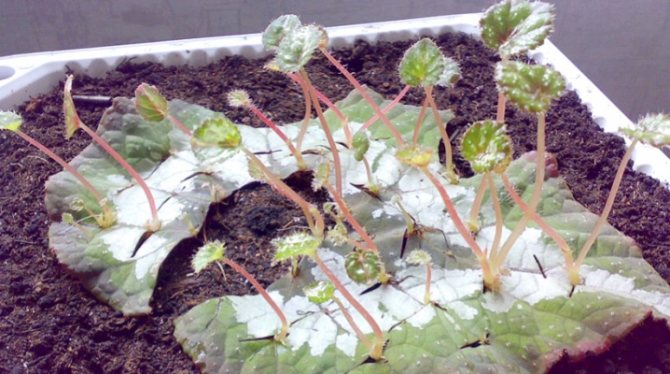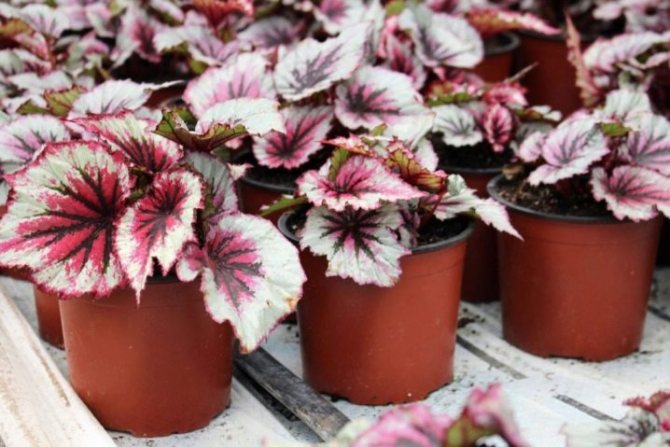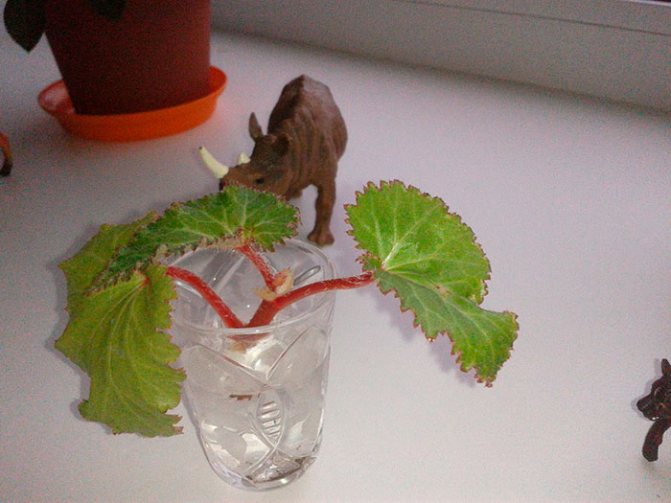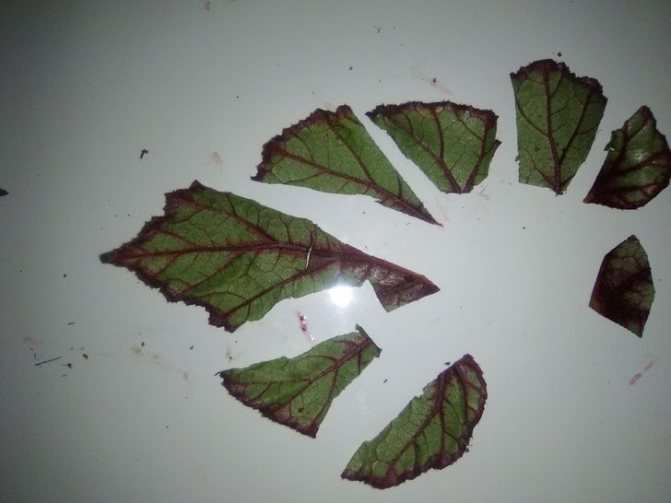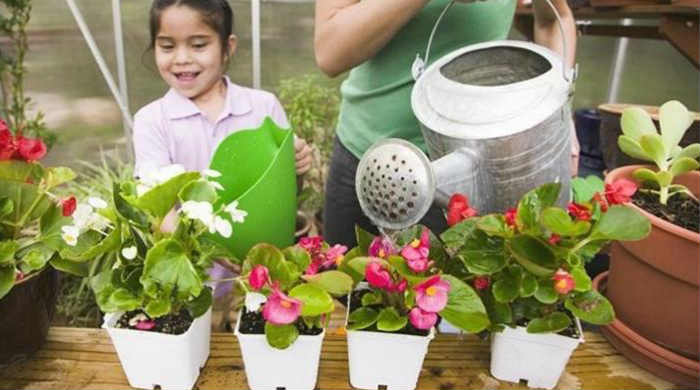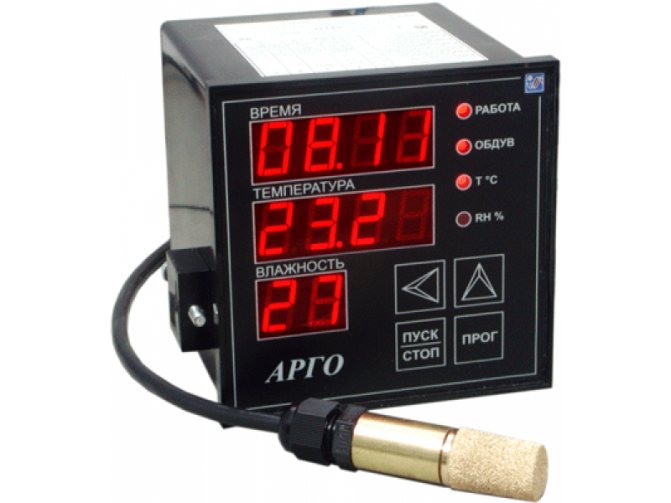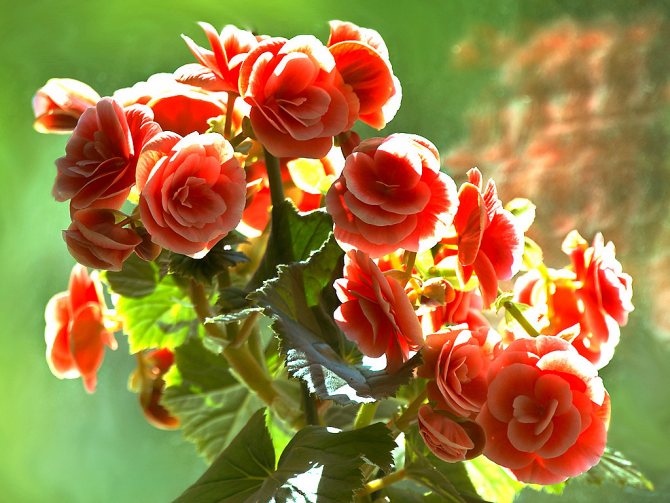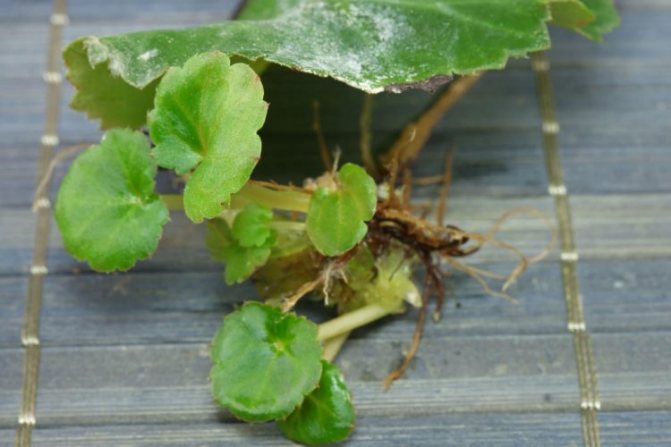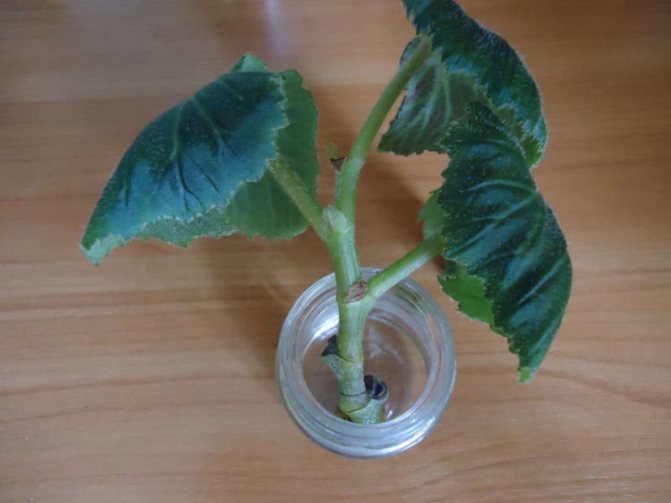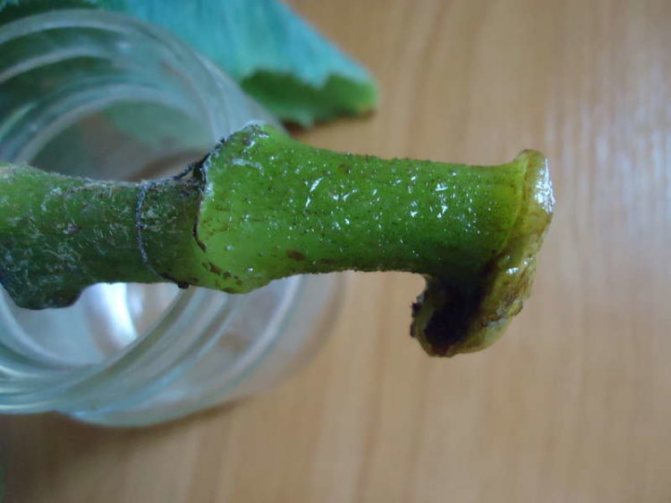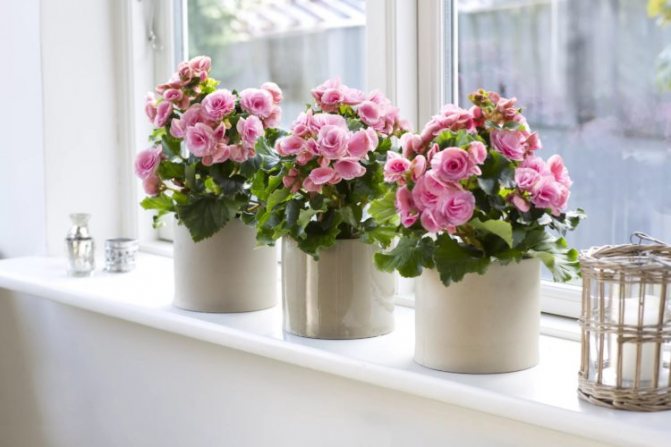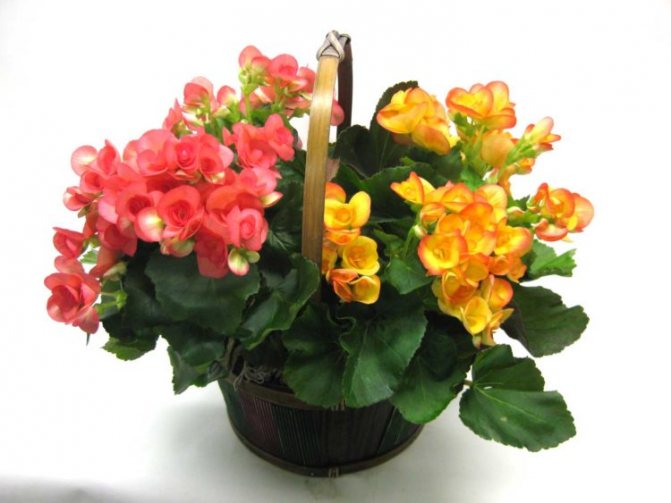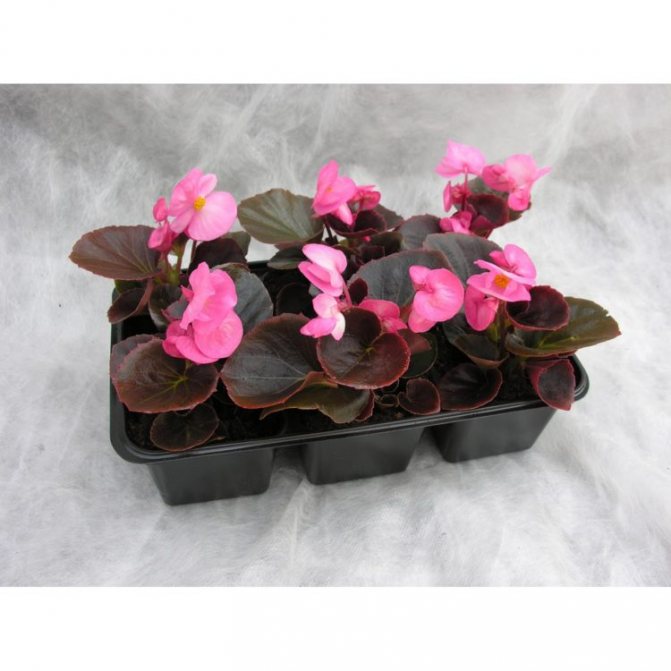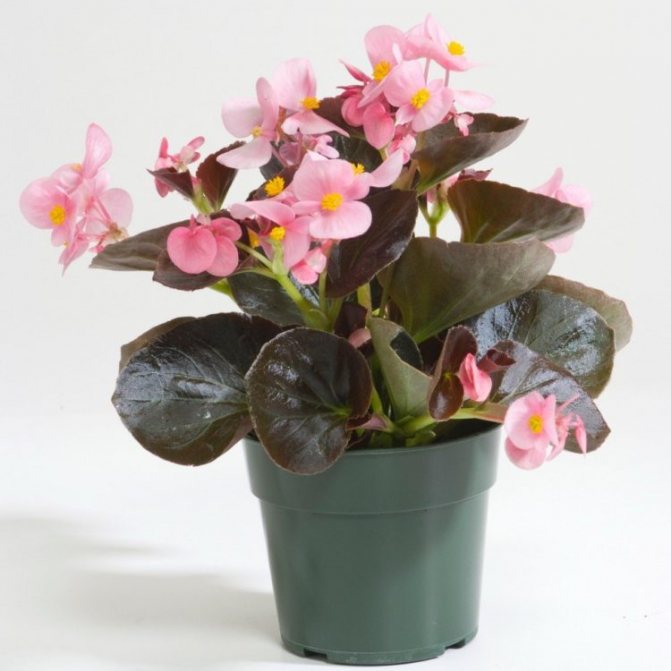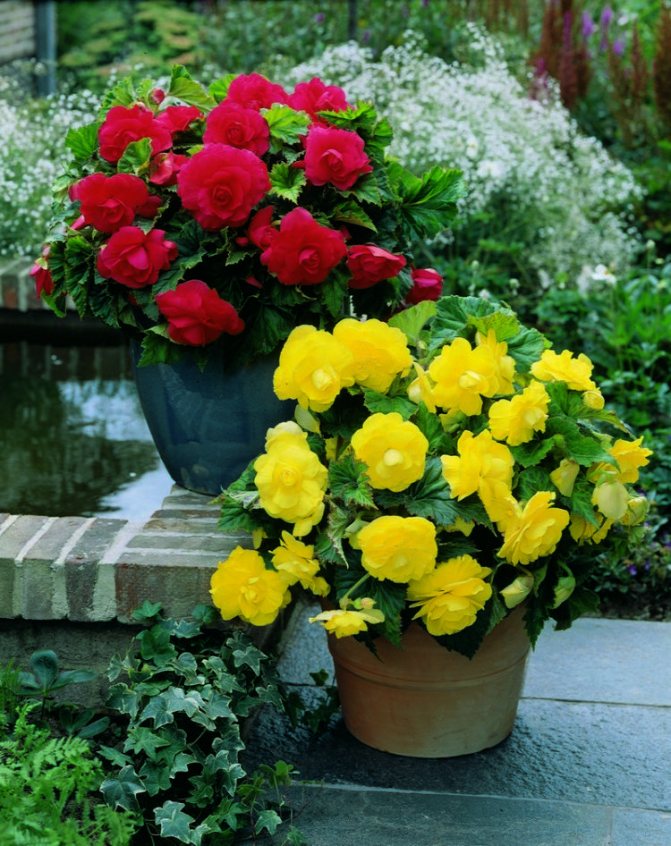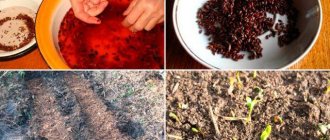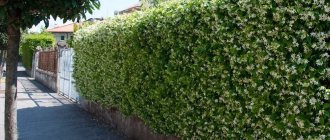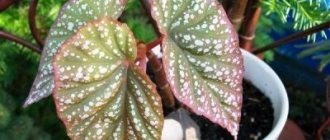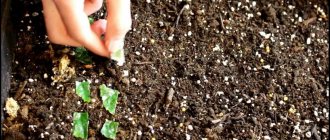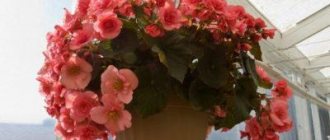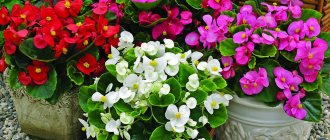Many growers love begonia. This beautiful plant is found in the form of shrubs, dwarf shrubs, annuals or perennials. There are over a thousand types of begonias.
Ornamental flowering plant
If you leave these plants outdoors in winter, they will die, but if you transplant them into a room, you can enjoy its beauty for a long time. In order for the flower to remain in excellent condition longer, you need to know how to transplant and propagate begonia at home.
The propagation of begonias is usually carried out in the following ways:
- Vegetative.
- Tubers.
- Leafy or stem processes.
- Seeds.
In order for the reproduction of begonias to be successful, you need to know all the subtleties of this process. How to propagate by children and tubers
Among the options for vegetative propagation for home breeding of plants, the following methods are used:
- With the help of children.
- By tuberous division.
Babies are formed in the leaf sinuses. They are an excellent breeding option for the plant. To grow a new flower, it is necessary to cut off the top of the rhizome no more than 8 cm long. The baby must be planted in a pot in order for the root system to form. The soil for begonias must be selected correctly. Usually, a peat composition with impurities of coarse sand is used. The baby is placed in a small container. To preserve moisture, it is wrapped in polyethylene. Before root formation, the baby must receive a sufficient amount of light. For this, it is better to place the pot on the windowsill.
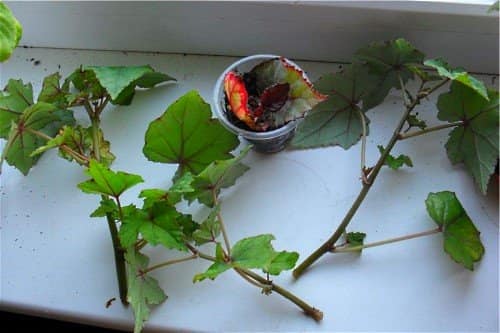
Flower cultivation
If, after a month, young shoots appear, then we can assume that the reproduction of begonias at home was successful. This means that you can remove the polyethylene and transplant the plant.
For reproduction by tubers, begonia must first be dug up and left to dry. It is better to do this at the end of August. After a while, a tuber is formed. It is better to store it in a box with peat or sand until spring, otherwise it will dry out.
Propagation of begonias in this way should be carried out in the spring, when sprouts appear on the tuber. With a sharp blade, it is divided into several parts, but so that there is a kidney on each piece. Sections need to be treated with wood ash and dried. Pieces of tuber should be planted halfway in pots. The soil must be moist. The pot can be covered with plastic wrap or covered with a cut bottle. When the tuber grows a few centimeters, the film can be removed, and the finished plant can be transplanted into a separate pot.
Begonia breeding methods
There are many varieties of begonias, most of which are breeder hybrids. Thanks to the efforts of the latter, large-flowered plants appeared. All of them, regardless of the type, are divided into two large classes - root and tuberous.
Begonia reproduces in several ways:
- tubers;
- stem cuttings;
- leaves;
- dividing the bush;
- seeds.
Each type of begonia requires a specific approach to reproduction. The main thing, given the peculiarities of the variety, is to choose the right method, and the procedure itself should be carried out in the spring. Warm months are considered the most favorable for breeding.
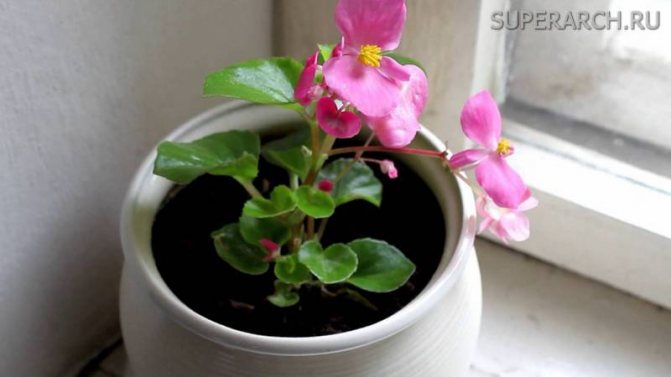

Variety of varieties
Tuberous begonia: planting and care at home
Decoratively bright and varied tuberous begonia is represented by many varieties with different types, shapes and color of flowers.
Non stop grade
Royal variety with flowers more than 10 cm in diameter.Each individual flower is a terry collection of petals in a large bright bud, of which there are quite a few on a small plant only 20-30 cm.
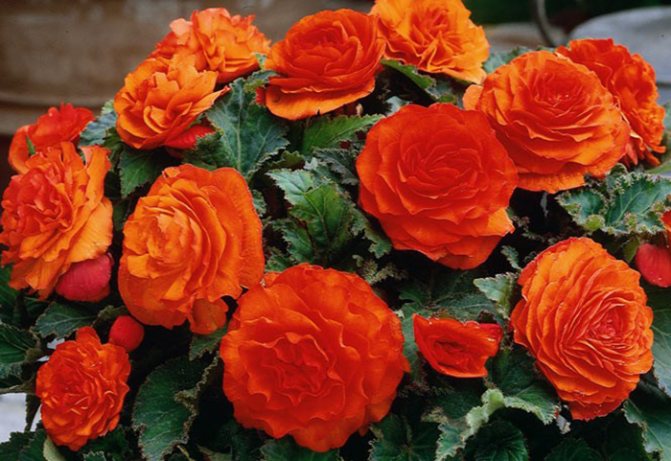

Non stop grade
The flowers of this variety are of an unusual kind - they are two-colored. The variety itself is represented by 12 different hybrids of white, yellow, pink, apricot and red.
Non-stop begonia grows in the form of a bush with well-developed horizontal branches, the length of which is easily adjustable. Thanks to this, it is recommended for decorating various landscape compositions.
Odorant grade
Begonia Odorata is in the form of a herbaceous bush with spreading branches about 20 cm high.It has large double inflorescences with white-pink buds up to 9 cm in diameter.
Flowering time June-October. Well suited for interior decoration, as well as a garden or balcony.
Variety of Grandiflora
The plant is small, covered with a large number of multicolored pink-shaped large flowers (diameter reaches 20 cm).
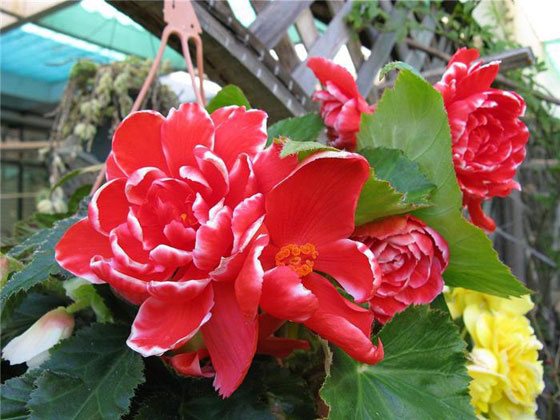

Begonia
The petals can be smooth or double, which creates additional volume for the buds.
Tuberous division of begonia
This method is ideal for tuberous begonias with large double red, yellow, white and orange flowers.
First, planting material is harvested:
- tubers for the winter are placed in a frost-protected, dry and cool place;
- waiting for the arrival of spring, when the first sprouts appear;
- with a sharp blade, the tuber is divided into equal parts, so that each has a sprout;
- the sections are treated with Fundazol or wood ash and dried.
The divided tubers are planted in shallow boxes filled with moistened but not dry peat. The containers should be low. Landings are deepened only halfway, covered with foil, placed in a well-lit place.
Leaf propagation
Another effective way of breeding begonias is by dividing the leaf. For this you will need:
- Select some large, healthy leaves and cut them into triangles. The procedure must be carried out so that one large vein remains on each leaf.
- Press the leaf pieces tightly to the soil and cover with foil or glass on top.
- Wait for the formation of new shoots on the leaves, and then transplant them into pots.
This method will delight many gardeners, because young shoots will appear after 14 days.
Transplanting tubers and further care
When the sprouts reach 5-7 centimeters in length, the tubers are transplanted one at a time so that the top is flush with the ground. The pots are small in diameter. Enough 10-15 cm. The containers are filled with a mixture of sand, humus, turf and leafy soil, taken in a ratio of 0.5: 1: 1: 2. Water the plantings sparingly, avoiding waterlogging.
They switch to a full-fledged watering regime when the plants take root. Begonia can be sprayed periodically. On sunny days, the flowers are shaded, protecting from direct sunlight. The temperature should be between 13 and 16 degrees Celsius. If more drastic changes are allowed, flower buds can fall off.
After flowering is complete, watering is gradually reduced and completely stopped in November. When the aboveground part dries up, the tubers are dug up and left to be stored in peat or dry sand.
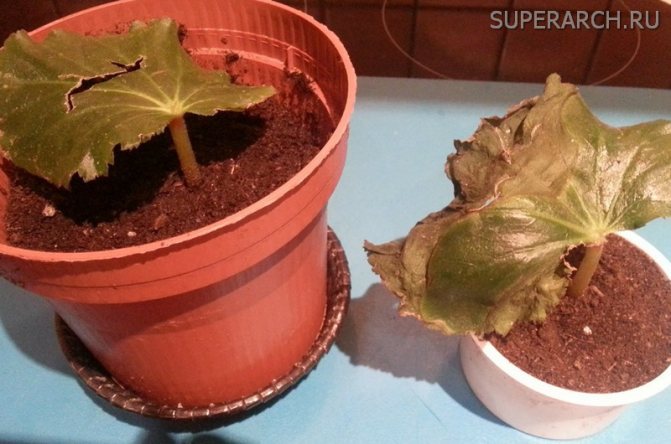

How to root in water?
If for some reason, for example, a bad experience, rooting in the ground scares you, then begonia may well root in water.
- For rooting, you need to take a transparent container, pour clean water at room temperature there, place the cuttings in it and wait.Only the bare part of the stem should be in the water, not the leaves.
- Keep soaked cuttings in a warm and bright place, and you also need to make sure that they do not start to rot. You do not need to put a whole bunch of cuttings in one glass, it is better that they do not touch each other.
- As soon as the plant gives roots of 1-2 cm, the shoot must be transplanted into the ground for permanent residence.
Stem cuttings of begonia
This propagation method is ideal for varieties that have stems.
To get planting material, you need to do the following:
- choose cuttings about 10 centimeters high with at least two pairs of leaves;
- cut off suitable cuttings, remove the lower leaves from the stems, leaving large ones, which are cut in half;
- the places of the cuts are well dried to avoid rotting.
The soil for planting is prepared from any soil intended for begonias, mixed in a 1: 1 ratio with sand. You can use a mixture consisting of 2 parts of deciduous soil and 1 part of black soil, peat, sand.
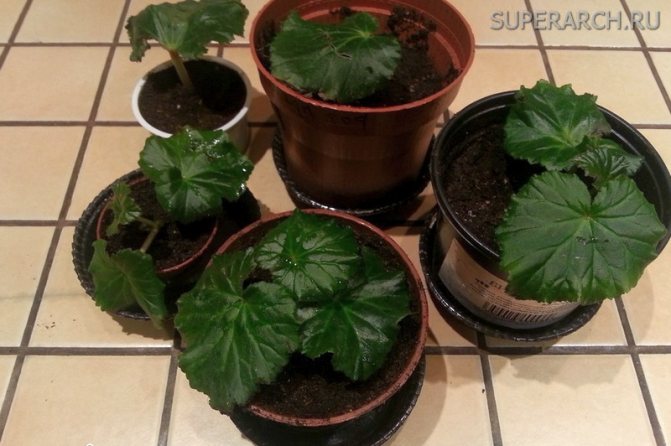

How begonia reproduces
Many novice growers are wondering how to propagate begonia. To date, breeders have bred about 1200 varieties of crops, as well as hybrids, which differ in the shade of inflorescences and the shape of the shrub. For growing outdoors, tuberous begonias are mostly intended. Popular varieties are Begonia Eternal Blossoms and Pendula.
Why begonia does not bloom
Unlike plants, the flowering of which begins with the arrival of spring, begonia will serve as an adornment of the infield during the autumn season. Reproduction of garden culture is provided in the following ways:
- by the seed method;
- cuttings;
- tuberous method;
- with the help of leaflets.
Even though begonia is a light-loving flower, it is recommended to plant it in shaded areas, because direct sunlight can negatively affect the further development of the plant. To avoid excessive drying out of the soil near the begonias, it must be watered abundantly and regularly.
Note! When watering, you need to ensure that the liquid does not stagnate in the garden, as this can cause the roots of begonia to rot, which will lead to the death of the plant. If necessary, you can resort to the use of drainage and regular loosening of the soil.
Planting stem cuttings
A depression is made in the ground. The stalk is inserted so that it is deepened to the leaves. Better rooting is assisted by treating the cut with a rooting stimulant. You can use Heteroauxin or Kornevin.
The cuttings are sprinkled with soil, crushed around the ground as tightly as possible. The landing on top is covered with a half of a cut bottle or polyethylene. The shelter is periodically removed to provide air flow. Young leaves begin to appear after about 30 days.
When the leaves get stronger, get used to the fresh air, the cover is completely removed. After three or four months, the begonia obtained from the cuttings begins to bloom.
Seeds
Having chosen a seed breeding method for begonias, get ready to work a little, because this method is more suitable for experienced amateurs. Planting with seeds allows you to preserve the varietal qualities of the plant. For beginners, it is better to purchase ready-made seeds.
As a general rule, sowing is carried out at the beginning of spring.
The technology is as follows:
Recent Entries
Gardener's lunar calendar for 2020: we do it right 3 reasons, make a reservoir in the country: we plan a new season Note for gardeners: 7 useful things to save energy
- Prepare a transparent container with a 1 cm thick drainage layer on the bottom.
- Moisten the soil, place the seeds on top and press down a little.
- Cover the container with a transparent lid or plastic wrap. Remember that the soil with future plants should always be moist.
Another important rule is that a lot of light will be needed for seed germination, and to speed up the process, you can use the Epin growth stimulator.
After 20 days, the first leaves will appear, which can be planted in separate flowerpots. For replanting, use the same soil mixture as for sowing. While the seeds are ripening, they will need to be aired, periodically removing the film.
Propagation by leaves
The main method of obtaining a new plant from stemless begonias. This is the simplest propagation for such flowers, allowing, using one leaf, to grow many shoots, ready for transplanting in three months. This breeding method is also well suited for creeping begonias, species with drooping leaves.
To prepare a leaflet for transplanting, you must:
- cut a healthy and strong leaf using a sharpened blade, put it on a hard surface;
- the leaf is cut into triangular pieces, making incisions from the median vein to the edges so that in each fragment obtained there are at least one or two veins.
When the planting material is ready, it is laid out on wet sand. There is also an alternative method, which consists in planting triangular pieces directly into the soil. This must be done carefully, sticking parts of the leaves vertically with a cut down. The planting is covered with polyethylene.
Description of the plant
Begonia is a real treasure for a florist... Among its species, you can find both flowering and deciduous ornamental plants. The variety is so wide that it is difficult to describe begonia as a separate plant.
Drop-shaped, rounded, elongated, similar to a maple leaf or heart, leaves of deciduous-ornamental begonia are stunning in their shapes. In addition, they have a very diverse color: red, black-red, silvery, speckled, with a complex pattern, pink-green, purple and gray leaves.
Beautifully flowering species of begonias amaze with no less variety... During the flowering period, the bushes are densely covered with simple and pink complex flowers. Yellow, white, cream, orange, red, pink and purple petals can be found among the varied species of this plant.
Leaf care for begonia propagation
Both laid out on the sand and leaves planted immediately in the ground need good moisture. To maintain such a microclimate in the shelter, you need to periodically spray the air under the plastic.
To prepare for the external environment, planting can begin after the appearance of young leaves. First, the package must be removed for a maximum of five minutes a day, allowing the plants to get used to the room air, and then regularly increase this time until it is time to transplant into a permanent flowerpot.
The pots are selected so that the growing flower no longer needs to be disturbed and transplanted. The main thing is not to compact the soil around the young planting. The sprout just needs to be planted, deepened, and the soil next to the sprout should be watered abundantly with water.
Landing
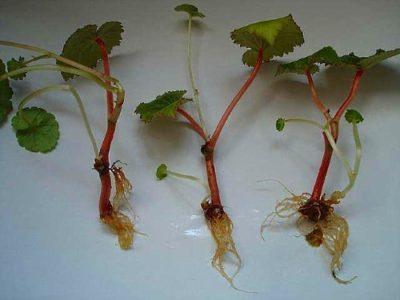

Pour a mixture of perlite (sand) and peat into a plastic cup, spill it, wait until the moisture is evenly distributed.- The stalk is dipped in water, it is also possible to use stimulants such as root. Then they stick it into the ground by 2-3 cm, lightly press the soil with your fingers.
- Then cover the container with a jar, glass or bag. Place a mini-greenhouse with a shank in a lighted warm place.
Division of rhizome or begonia bush
Great for bush-growing varieties. The most popular type of such begonia among flower growers is ever-flowering.
Propagating a plant in this way is quite simple:
- an adult flower is carefully removed from the pot;
- get rid of large leaves, overgrown peduncles and stems;
- the roots are washed with water from clods of earth;
- the bush along with the roots or only the rhizome is divided into parts using a sharp knife so that a sprout or bud remains on each new division;
- sprinkle the places of cuts with coal;
- the roots are treated with Kornevin or a composition similar to it in action.
The resulting cuttings are planted in pots prepared with nutrient soil, watered. This procedure is best done in the spring months.
Photo of the rooting process
Check out the photo of rooting begonia:
Reproduction of begonias from seeds
A rather difficult method of reproduction, requiring a lot of effort and time, but suitable for all flowering varieties of begonias. Otherwise, you can not wait for the shoots. The most favorable time for planting seeds is winter. Planting material is purchased in the store, choosing the variety you like the most.
In order for the sprouts to sprout safely, three main conditions must be provided:
- low temperature;
- bright lighting throughout the day;
- high air humidity.
The soil for planting is prepared from sand, earth, peat. It is better to use a special container. When the sowing is done, the soil is moistened. You can use a spray bottle or lower the container to the middle in a bowl of water. This will ensure excellent germination of the material.
After the soil has acquired a dark shade, indicating moisture saturation, the container is removed. A glass shelter allows you to maintain moisture. The container itself should be located in a well-lit place, but not in direct sunlight. Otherwise, the soil will dry out.
What to do after?
Let's consider, what conditions must be provided for a young plant:
- The pot for a young plant should not be large; at the initial stage, 700-800 ml in volume is enough. There should be holes in the bottom of the container for the outflow of excess water.
- Begonia soil is sold in specialized stores. For self-preparation of the soil, you need to take 2 parts of sod land and one part of leaf humus, sand, peat (read more about the optimal soil for begonias here).
- At the bottom of the pot, a drainage layer must be laid so that the roots of the plant do not rot.
- Begonias are very fond of good lighting. However, the scorching summer sun can burn the begonia leaves. Therefore, in the summer, it is better to place begonias on the eastern and western windowsills, or not on the windowsill itself, but next to it.
- The room temperature is suitable for begonias in the range of 20-25 degrees; in winter, a colder atmosphere, range of 15-18 degrees, is needed.
- Begonia needs high humidity, but it cannot be sprayed. Therefore, to solve this problem, you need to put the pot on a stand in a tray with water, pebbles can be used as a stand. The main condition is that the bottom of the pot should not touch the water.
- Watering is required abundant, but you should not get on the stems and leaves. You can water through a drip tray by placing the pot in a container of water for 20-30 minutes. Water for irrigation should be settled and at room temperature. In winter, watering is reduced, and tuberous varieties are not watered at all in winter.
- Top dressing with a complex mineral fertilizer begins to be carried out from the beginning to the end of the flowering period. Nitrogen nutrition for flowering species is not required additionally. Deciduous ornamental begonias can be fed with nitrogen fertilizers if the plant becomes weakened and frail.
- In the spring, you need to transplant the plant into a more spacious pot. You can do this at other times of the year, if the roots have already occupied all the space in the pot, and the plant is cramped. After transplanting, the flower is placed in a darker place for several days.
- The formation of the bush is carried out, as with other plants. Pinch the main shoots to form additional ones, remove diseased and weakened branches, faded buds. The main thing is not to overdo it, so that the plant does not receive too much stress.
Seedling care
The moisture formed on the glass must be wiped off. The shelter is removed after the first shoots appear, and the container with seedlings is exposed to light. The main thing is to continue to protect the landing from direct rays. Top dressing with nitrogen allows you to accelerate further growth.
To make a pick, the containers are first prepared. They are filled with peat, sand and leafy soil, which are taken in a ratio of 2: 1: 2. Seedlings from the container must be removed very carefully, lifting with a peg, separated, holding by the cotyledons.
With the help of a planting peg, holes are made in pots for planting, allowing you to place the entire root system inside. This is not difficult to do. The depressions are made similar to those that were in the containers before the dive. The distance between the seedlings is made at least 2.5 cm, and the soil around is well compacted.
The land in the planting is watered from a watering can or a spray bottle, the container is placed in a bright and warm place. Plants can be transplanted in separate pots when the leaves of the seedlings begin to overlap.
Propagation by stem and leaf cuttings
Propagation of begonia at home can be done using stem cuttings. To get a new plant, you need to lay the tuber for germination. The land must be selected correctly. A mixture of peat and sand works best. To propagate a plant by cuttings, the slice chosen for rooting must have two or more buds.
This process takes 3-4 weeks. But it must be borne in mind that propagation by cuttings, for each sample, occurs in different ways: in some, the roots develop quickly, while in others very slowly. During this period, the cuttings must be kept at a temperature not lower than 20 - 22 ° C. To maintain the necessary moisture, cuttings pots must be covered with plastic wrap or bottles.
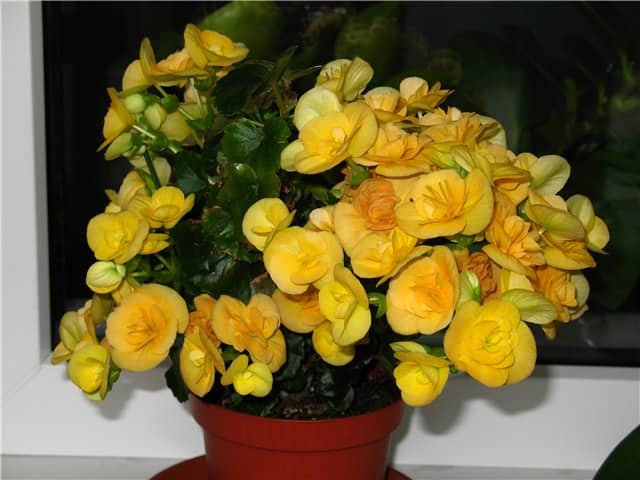

Growing an indoor flower
After the root system is fully formed, the plant can be planted in a separate container. The soil for begonia should have the following components:
- Sod land.
- Peat.
- Humus or plant compost.
All ingredients must be taken in equal amounts. River sand can be added to improve the quality of the soil.
Often at home, begonias are propagated by leaf cuttings. This method allows you to quickly obtain a large number of young plants.
Begonia leaf propagation is carried out as follows:
- You need to cut a healthy, undamaged leaf.
- Then you need to cut it into small squares.
- Ready samples must be placed in a substrate, the composition of which is sand and peat in equal parts, or just in clean sand.
- The container with the planted cuttings should be stored in a dark place, maintaining the moisture of the substrate.
New plants can be obtained in 1-2 months. With leafy cuttings, the plant reproduces in water. But in this case, the length of the leaf that needs to be rooted must be at least 10 cm. Then the propagation of begonias at home in water will be just as successful.
Secrets of growing an ornamental leafy plant
General recommendations
In order for the rooted begonia to take root well, you should know some of the features of planting this plant:
- the flower has a small root system, so it is best to choose a pot that is not high, that is, shallow;
- the distance from the tubers to the edges of the pot for a tuberous begonia should be no more than 2 cm;
- do not forget about laying a drainage layer of large expanded clay or pieces of red brick;
- the growing point at the cutting and the root collar should remain unburied;
- bushes must be sprayed as often as possible;
- the first two or three days after planting, it is better to leave the flower pot in a shady place.
Following these simple guidelines and choosing the right planting method will allow you to replenish your collection of begonias with new and beautifully flowering plants that will decorate your home all year round.
How to breed begonia: differences in home and outdoor care
As for the varieties, they can be both perennial and annual. You can also find plants with a tuberous or creeping root system, with fruits that are in a capsule. It is worth noting that in order to achieve a lush and long flowering, in the process of growing begonias, it is necessary to pay due attention to it.
The rules for breeding and caring for begonias in the open field and in indoor conditions are significantly different. In order to grow this culture in an apartment, you need to ask yourself how to breed begonia and follow these recommendations:
- to the maximum create favorable conditions that will promote flowering and active growth of begonias;
- protect the plant from wind and frequent drafts;
- create optimal environmental conditions in the winter season;
- choose a suitable location for the location so that the culture feels comfortable all year round.
Note! It is strictly forbidden to transplant begonia in the winter season, since the plant can be affected by various diseases or even die.
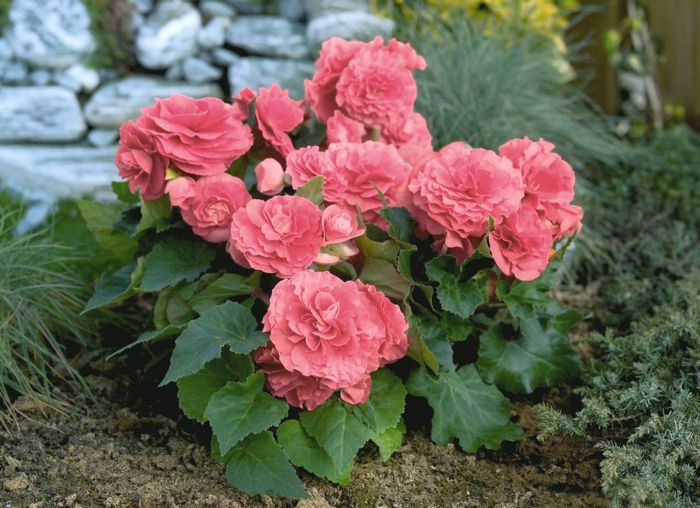

Begonia
It is worth noting that you need to care for begonias a month before the planned planting of tubers in open ground. It is necessary to wait until the emerged seedlings grow a little, and then take them out to the street for hardening. The time spent away from home should be gradually increased. As soon as the ground warms up to at least 15 degrees Celsius, the seedlings must be planted in the garden bed.
How to care for rooted cuttings
After complete rooting, the cuttings are transplanted into pots with the help of transshipment.
Watering
Watering is moderate, with light drying of the earthen coma.
Temperature
Optimum temperature + 20 ° ... + 25 °
Humidity
Begonias love moist air. To humidify the air around the plant, use a tray with expanded clay, which is poured with water and a pot with the plant is placed on top.
Begonias of the first year of life do not shed their foliage in the winter. This is due to the fact that the tuber is not yet able to accumulate nutrients in sufficient quantities for wintering. The bush hibernates on the windowsill along with the rest of the houseplants. Begonia stops growing and does not bloom anymore, so you need to water the plant carefully, keeping an eye on the moisture content of the soil.
How to grow?
Care
We provide the young plant with the necessary conditions:
- Temperature within room temperature. Taboo on sudden changes and drafts.
- Humidity is slightly above average. It is impossible to spray on the plant, but you can humidify the air around, or put a wide container of water next to it.
- The lighting is long and intense enough. On the southern windowsill, begonias will feel great in spring, but in summer, during the period of greatest solar activity, it is better to place the plant in a less illuminated place. If this is not possible, you should think about additional illumination with a special lamp.
Watering
Watering young plants must be done in a timely manner and extremely carefully. Otherwise, you can destroy them. Water should be at least room temperature or higher by 2-3 degrees. It should be soft and stable. Watering young begonias can be done with a syringe or spoon.
You can not get on young shoots. An adult plant that has already developed a root system is best watered through a sump. The land should always be slightly moist, excess water threatens the development of various diseases.
We observe other care measures:
- A couple of weeks after planting in a pot, you can start regular application of mineral fertilizers. Complexes are suitable for flowering representatives of the flora. This should be done 2-3 times a month.
- We provide begonias with a dormant period during the winter months.
- Every year we transplant the begonia into a larger pot with soil replacement.
Getting begonia from a donor leaf is quite simple. In addition, this method is distinguished by its availability and quick results. In a relatively short time, you can get a whole army of young begonias. I wish you an early rooting!
If you find an error, please select a piece of text and press Ctrl + Enter.
What needs to be prepared?
Preparation for breeding begonias is quite simple and does not require large expenses. To plant a leaf in any way, you do not need to specially buy any tools: you can do with improvised devices. You will need:
- priming;
- capacity for him;
- blade or sharp knife.
In order for the plant to take root faster and begin to develop, various stimulant fertilizers ("Kornevin", "Epin", "Energen") are often used. Using them is optional, but if you believe the reviews, the results after use are pretty good.
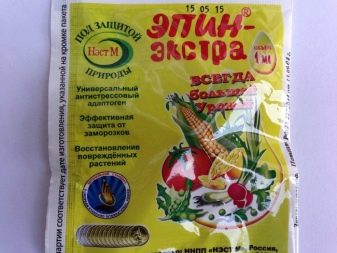

Almost any container is suitable at the initial stage. These can be new pots or used ones. Cups and household food containers can be used.
For the subsequent transplant, clay pots are better suited: air exchange processes run better in them, moisture evaporates. But for the first time, plastic is also suitable. For planting in parts of a leaf, you can take the smallest 100 ml containers.
All pots and other containers must be washed and disinfected with potassium permanganate or boiling water. It is advisable to boil used clay pots.
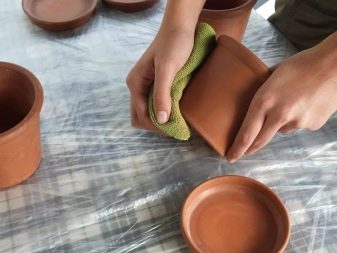

The choice of soil should be approached more responsibly. You can find the appropriate soil in the store: its composition is adapted for planting begonias, chrysanthemums and roses. And also the soil mixture is easy to prepare yourself.
- Take leafy soil, preferably from a forest or park (avoid willow and oak). It must be well cleaned, dried and sieved.
- The resulting mass should be mixed in equal proportions with peat and added 2 times less sand and humus. Thus, we get a moderately nutritious, slightly acidic, loose mixture.
- Before use, the mixture must be calcined to get rid of existing pests.
The bottom layer in the pot is usually drainage. You can buy expanded clay or use broken brick, pebbles and even foam. A little drainage needs to be added to the soil mixture itself: this way the moisture will be better distributed. All materials must be rinsed and dried.
For a better outflow of water in the bottom of the container, you need to make holes and pick up a pallet.
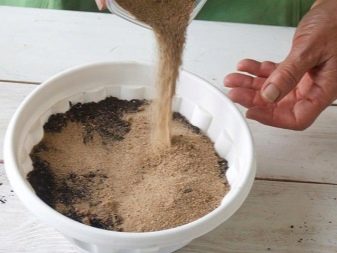

Popular types of indoor begonias
- A group of ever-flowering begonias. Shrubs are not higher than half a meter. Leaves are wide, smooth, with veins. The stems are dense, fleshy. The flowers are small, collected in large inflorescences. Popular varieties are graceful begonia, Schmidt's begonia, Columbia (lanchiana). These varieties are best propagated as a whole leaf, with a petiole.
- Tuberous. A large group of plants with different leaves - pubescent and smooth, and thick fleshy stems. Famous representatives - drooping begonia, Sutherland begonia, multiflorous. Tuberous plants are usually propagated by dividing the tuber. But other methods of obtaining new plants are quite acceptable.
- Royal, or begonia rex. A low, up to half a meter, herbaceous plant with a developed root system. Leaves are asymmetrical, serrated, with a sharp top. On the front side, they are velvety, of a complex color. From the inside - green with burgundy veins. The leaves are attached to the trunk on long stalks, making the bush look lush. The flowers are inconspicuous, small, pink.Reproduction by the royal begonia leaf is possible, moreover, this is one of the best ways for this type of plant. Popular varieties are snail, griffin, dollar dawn (with a black border around the edge of the leaf).
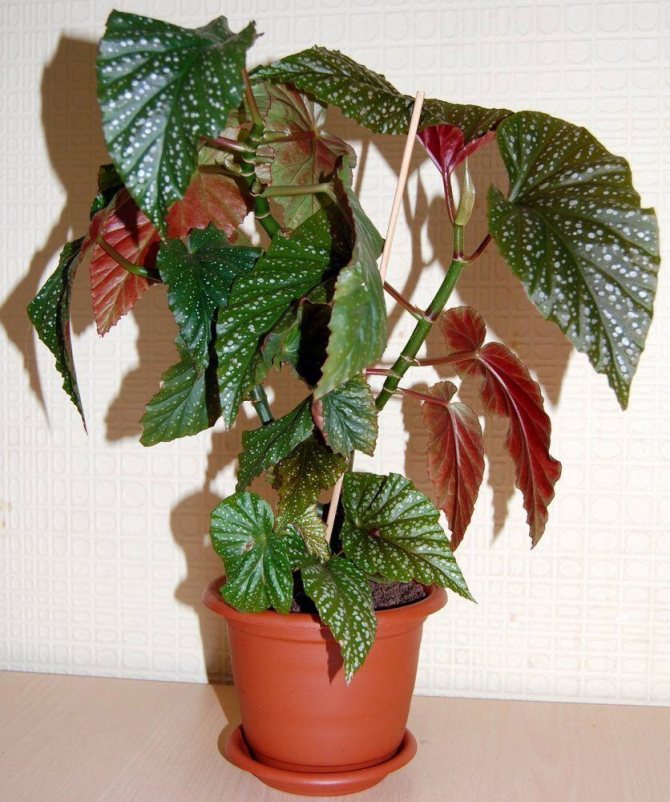

- Ampel begonias. A group of plants with beautiful inflorescences and creeping shoots. Most often they are propagated by layering and cuttings.
- Elatior begonia, or winter. Very beautiful long-flowering bush with bright green smooth heart-shaped leaves. Propagation of begonia - by a leaf, since it does not have stems and shoots. Representatives - annabelle, piccora.
Preparation
Before planting the cuttings in the soil, you need to prepare them for reproduction and follow the step by step next steps.
- Use a sharp knife to cut off the top of the shoot, about 11 centimeters long. There must be 2-3 nodes on the handle.
- It is necessary to remove the lower leaves and leave only 5-6 leaves on the top of the stem.
- Leave the cuttings to dry for a while. When the cut surface becomes dryish, you need to start rooting.
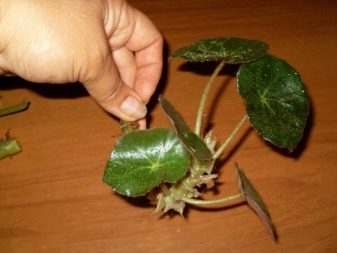

Reproduction
The most undemanding in terms of care is considered a variety of tuberous begonia. It is grown in gardens, parks, city flower beds, as well as on the windowsills of apartments and houses. This species is well bred by any of the methods:
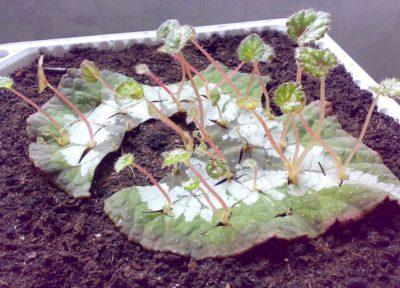

planting seeds;- by a sheet or part of a sheet;
- stem cuttings;
- dividing the tuber.
Almost all begonia varieties are capable of vegetative propagation, part of the stem, to obtain a large amount of planting material. Branched subspecies with sagging foliage are bred with a leaf. Next, we'll look at how to propagate a flower correctly.
Planting seed
Any kind of begonia can be propagated by seeds. However, many believe that growing begonias from seed is a very time-consuming and unreliable method. It is suitable when there is no mature plant to propagate by cuttings, or when a lot of begonias need to be grown quickly. How to grow begonias from seeds? To begin with, you need to purchase seeds and special soil for begonias at a flower shop.
It is advisable to mix the substrate in half with river sand, after which the resulting mixture must be moistened with settled water. The seeds must be spread evenly over the surface of the soil and slightly pressed into the substrate. Due to the fact that the seeds are very small, they do not need to be sprinkled with earth on top. How does begonia propagate further? It is necessary to cover the container with seeds with a plastic bag and put it in a warm room.
Crops should be periodically ventilated and condensate removed. After about a couple of weeks, the first shoots will appear. After the young shoots have emerged from the ground, the container with them should be placed on the eastern or western windowsill closer to the glass, where it is cooler so that the seedlings do not stretch out very quickly. The bag from the container must be removed first for a short period of time, gradually the airing time must be increased.
Photo
Here you can see a photo of the plant.
Other methods of propagation of such flowers
- Seeds. Option for all flowering species. True, it is not the most popular, as it takes the most time.
- Division of the rhizome. When transplanting an old bush (the same ever-flowering begonia), you can make two of it.
- Tuber division (for tuberous varieties). Reproduction "potato method": the tuber is cut so that on each part there are live buds. The sections are covered with a disinfectant (you can even use brilliant green). After that, they need to be planted in pots. A bush will grow from each piece (usually halves).
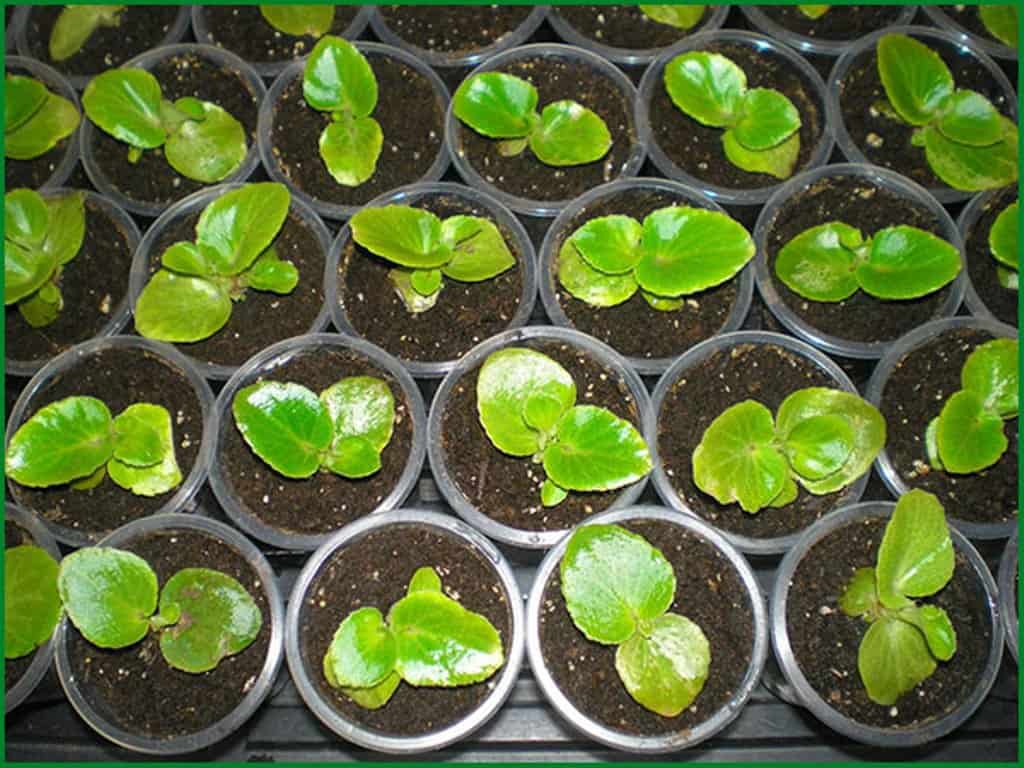

How to keep young begonias in winter?
Regardless of which method of growing new plants was chosen - tubers, seed or propagation of begonias by cuttings, young plants should be kept in a bright, cool place in winter. Watering should be moderate, but drying out should not be allowed. In winter, begonias hardly grow.But with the onset of sunny spring days, young plants quickly catch up.
Subscribe to new articles in the Floriculture section and receive updates by mail. Expert articles on gardening and gardening are understandable and accessible to everyone!
Tuberous begonia appeared as a result of many years of breeding experiments. This is an artificially bred hybrid species, in the creation of which more than 9 plant species from different parts of the world were involved. The idea arose back in the nineteenth century, and today there are about 200 species of this wonderful colorful perennial plant.
External description
Begonia is a genus that belongs to the begonia family... Homeland - tropical forests in the mountains of South America, India, and West Africa. For more than 3 centuries, begonias have been grown in gardens and indoors almost all over the world. It is not large, but very ornamental plant has more than 1000 varieties. Among them there are species that are distinguished by unusual beauty of leaves, and flowering specimens.
In decorative leafy varieties, leaves can be of the most inconceivable shades, with a beautiful pattern. Flowering species have small, simple and complex flowers with a color of white, yellow, pink, red, purple hues. Begonias bloom very magnificently and for a long time, for which they fell in love with flower growers all over the world.
Features of the
Originally begonia from the rainforests of South America, Asia and Africa. The plant is rich in species diversity and has more than 900 species. There are deciduous, ornamental, reed, shrub and flowering species of this flower. Begonia has various shapes (drop-shaped, rounded, elongated), leaf colors (red, black-reddish, silver, with complex patterns, pinkish-green, purple, gray). The petals can be of the following colors: yellow, snow-white, cream, orange, red, pink and purple.
Preparing the vessel and water for rooting
For rooting, it is better to choose a dark glass container. It will trap the sun's rays, allowing the water to stay fresher longer. Experienced growers do not recommend changing the water while the stalk is propagating. However, it is allowed to add fresh liquid to compensate for the evaporated one.


You need to immerse the cuttings in soft water (filtered, settled or rainwater) at room temperature.
It is recommended to add aloe juice to the liquid in which the cutting will take root. It is a natural growth stimulant that induces active cell division. It also strengthens the plant's immune system, allowing it to defend itself against phytopathogens (fungal microorganisms, viruses and bacteria that attack flowers). Add 5 drops of freshly squeezed aloe juice to 1 glass of water.
Classification
Begonia is a tropical beauty native to Africa, Asia and South America. It got its name from the name of the governor Fr. Haiti - M. Begona. All begonias are conventionally divided into two groups:
- Decorative flowering - with bright lush flowers and long flowering.
- Decanthous - with bright attractive foliage and small nondescript flowers.
By the type of root system, begonias are divided into tuberous, rhizome and plants with a superficial root system.
Among all the groups mentioned, there are shrubs, semi-shrubs, creeping and erect herbaceous plants.
Problems
What if the roots don't appear?
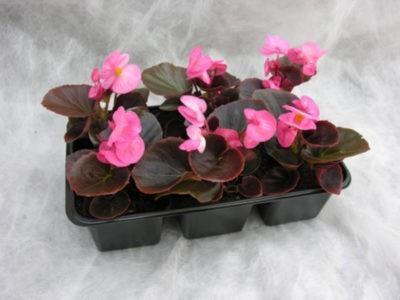

Refresh the cut on the cuttings that are in the water and change the water to clean water. You can add root roots to the water.- If roots do not appear in the soil, check if the soil is dry, cover the cutting to obtain high humidity.
- Check that all conditions of detention are being followed.
- Change the method of soaking in water to rooting in soil and vice versa.
- Take your time and give the plant time. If the roots appear in the water after a week and a half, then in the ground it may take 3-4 weeks.
What if a young plant does not develop?
- Check if all the conditions for the flower are provided.
- Examine the plant for diseases or pests. Diseases appear due to improper care and are treated with special drugs. Pests can be removed manually or using systemic insecticides.
- Perhaps the plant is simply flooded with water. If the plant is really bad, you need to carefully remove the earthen lump and leave to dry. You can replace the soil and cut off rotten roots. Then you need to return the begonia to the pot.
- If development stopped in winter, there is nothing wrong with that, with the onset of spring it will continue to grow.
- For recovery, begonias can be transplanted outside in the summer. The main thing is that the landing site is protected from strong winds, showers and the scorching sun.
Tuber propagation
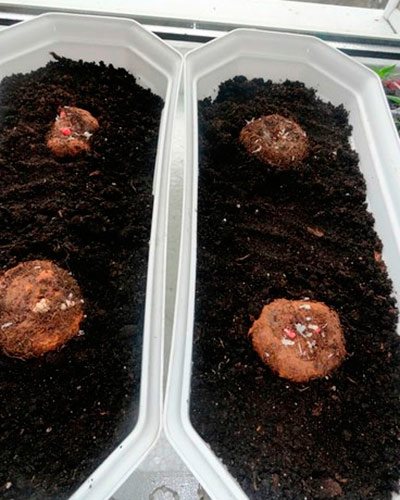

It is used in tuberous species of begonias, it is carried out in the spring, when sprouts appear. The tuber is carefully cut into pieces with a knife, and each should have a fresh sprout. Places of cuts must be powdered with wood ash, slightly dried, and then plant the nodules in prepared containers with a substrate. It is necessary to fill up only half, but when the sprouts reach a height of about 8-10 cm, you can fill up the tubers completely.
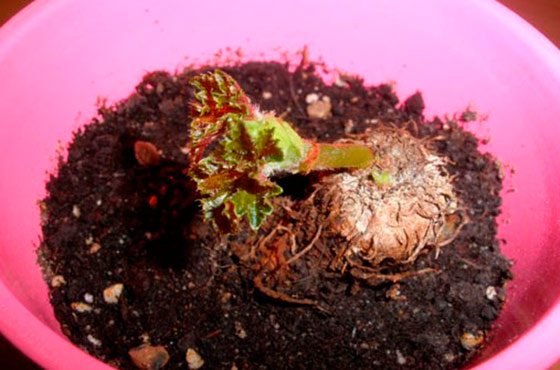

As you can see, there is nothing here, the main thing is to carefully follow all the recommendations and observe temperature conditions during cultivation. But after a while, this amazing plant will thank you with lush beautiful greenery and magnificent flowering.
Step-by-step instruction
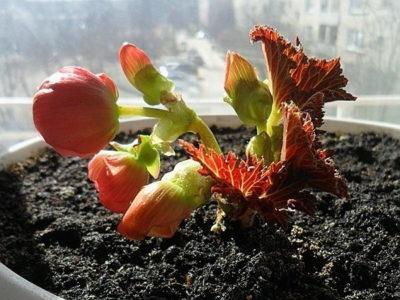

If the time is right, the substrate and the new pot are ready, you can start transplanting. The sequence of actions is extremely simple:
- A drainage layer, for example, expanded clay, is laid out at the bottom of the new pot. A small amount of charcoal can be placed on top of it for better protection of the root system from waterlogging.
- Next, a layer of earth with a thickness of approximately 2 cm is poured.
- Begonia is carefully removed from an old pot.
- The root system is carefully examined, all damaged, dried, rotten areas must be removed. If you suspect a fungus or mold, it is recommended to treat the root system with a fungicide solution.
- Next, the begonia is placed in the center of the new pot and carefully sprinkled around with a substrate so that at least 1 cm remains to the top edge of the pot.There is no need to compact and tamp the soil, since the roots need air access.
- Water the transplanted begonia abundantly so that the entire substrate is saturated with moisture. Be sure to drain the excess liquid from the pan half an hour after watering.
If, after watering, the substrate in the pot settles, it is imperative to add the missing amount so that the roots are completely closed.
How to plant? When transplanting, it is important to ensure that the growth point of the begonia remains above the surface. If the plant is planted too deep, it can rot and die. It is almost impossible to save a flower that has a damaged growth point.
Varieties of royal begonia
This type of begonia has several varieties that are hybrids, they are well suited for home growing:
Begonias Rex, royal varieties, as well as their hybrids photo
- Mini Mary Christmas - begonia with the most variegated leaves, the bush has a compact size of 35 cm in height. The leaves are asymmetrical in shape, have a multi-colored color. The brown zone gradually turns into crimson and green, on the front side of the leaf you can see small mother-of-pearl spots, along the edge there is a burgundy border.
- Escargot - it has a characteristic twisted leaf that resembles a spiral, outwardly resembles a snail's shell. In the very center of the leaf there is a silver spiral.
- Dollar Dawn is a miniature begonia variety with scarlet leaves that have a black border around the edge.
- Dark Mambo has olive-colored leaves on the front side and burgundy on the back, in the center there is a silver star.
- The Griffin variety is distinguished by variegated leaves, which, due to long petioles, form a fluffy compact bush that grows up to 40 cm in height. This variety is the most hardy and not capricious.
Any of these varieties of royal begonias do well in indoor conditions. When caring for a flower, it must be borne in mind that this is a tropical plant.


